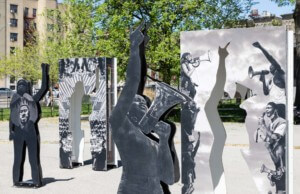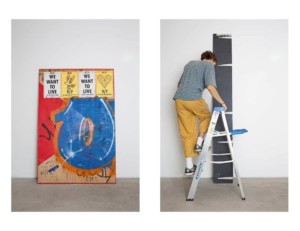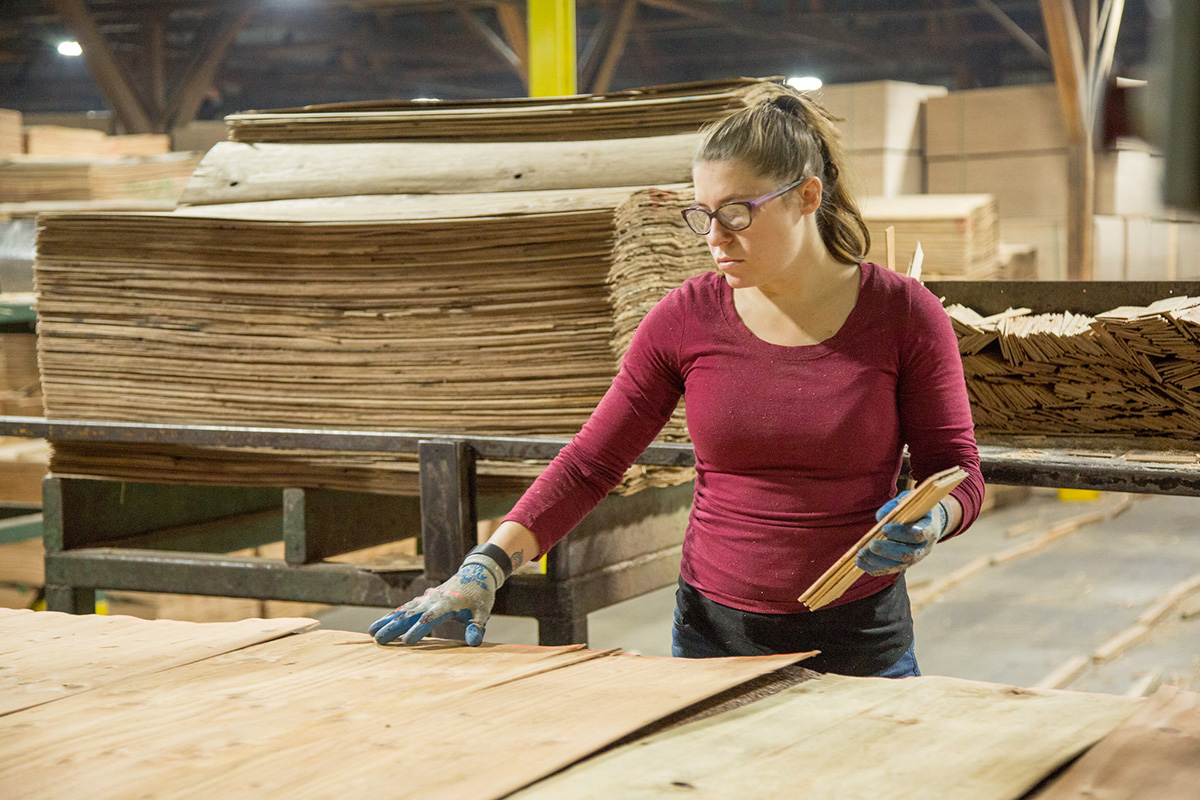The intriguing and little-known history of plywood is the focus of a new exhibition at the Victoria and Albert Museum (V&A) in London and of a new book, Plywood: A Material Story, by the exhibition’s curator, Christopher Wilk, keeper of the museum’s furniture, textiles, and fashion department.
In a recent phone interview, Wilk said he had proposed the exhibition, Plywood: Material of the Modern World, to the V&A 20 years ago, in part, because “no one had ever seriously researched or written about it. Almost all on the Internet about it is wrong.”
The exhibition—which will travel after it closes in London on November 12, though its itinerary has not been set yet—explores the history of plywood through almost 150 objects from a dozen institutions, including the V&A, Museum of Modern Art, Smithsonian Institution, and Deutsches Museum. In addition, on display in the museum’s garden is a cluster of ice-skating shelters by Vancouver, British Columbia–based Patkau Architects that were made by bending flexible plywood sheets and attaching them to a timber frame to create sculptural forms. Museum visitors can sit in the shelters, originally designed to rest along a frozen river in Winnipeg, where winter temperatures can drop to 40 degrees below.
According to Wilk, plywood—which is made by gluing together layers of cross-grained wood veneers, thereby creating a pliable board that can be stronger than solid wood—dates back to ancient Egypt, as seen in a Third Dynasty coffin made from panels of six-ply wood joined with wooden pegs. It was used to make furniture in Europe in the 17th and 18th centuries and became widespread starting in the mid-19th century when a New York–based German émigré cabinetmaker John Henry Belte applied for various patents for the manufacture of plywood furniture.
The exhibition and book also explore the stage the 1939 New York World’s Fair provided plywood: This featured Alvar and Aiino Aalto’s legendary Finnish pavilion, which was made of plywood and displayed a range of wooden and non-wooden Finnish products, described by Alvar as a “symphony in wood.” Also shown here was the “Plywood House” by New York architect Lawrence Kocher which featured a full range of moderne-style Douglas fir plywood products. When large slabs of plaster fell off one of the fair’s symbols, the Trylon, in late 1939, plywood panels came to the rescue: They were used to entirely re-clad its 700-foot-high surfaces for the fair’s 1940 season.
And the exhibition and book delve into what Wilk says is the little-known story of the use of plywood in airplane design, in terms of early 20th century European aircraft; European and American aircraft manufactured during World War I; and the British Mosquito bomber, flown during World War II and described by Wilk as “the most remarkable and successful plywood aeroplane ever built.”
The exhibition and book bring the story of plywood up to the present day—from its use in chairs designed by Charles and Ray Eames, Arne Jacobsen, Jasper Morrison and others, to its rising popularity in the makerspace movement, which prizes plywood as a “natural” material capable of being “crafted.” Nor do they ignore the material’s darker side: the use of urea-formaldehyde-based adhesives in construction plywoods, which emit formaldehyde gases, and deforestation resulting from the search for tropical timber, used in plywood manufacture, often in Asia.










